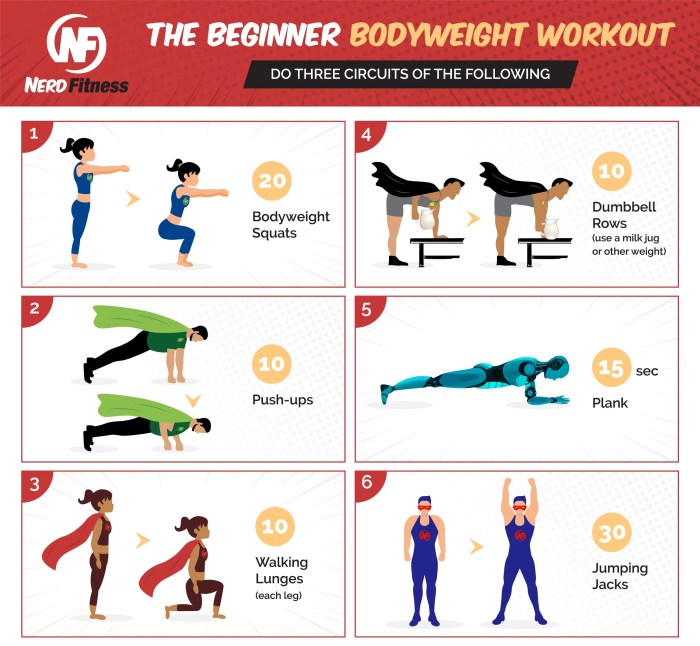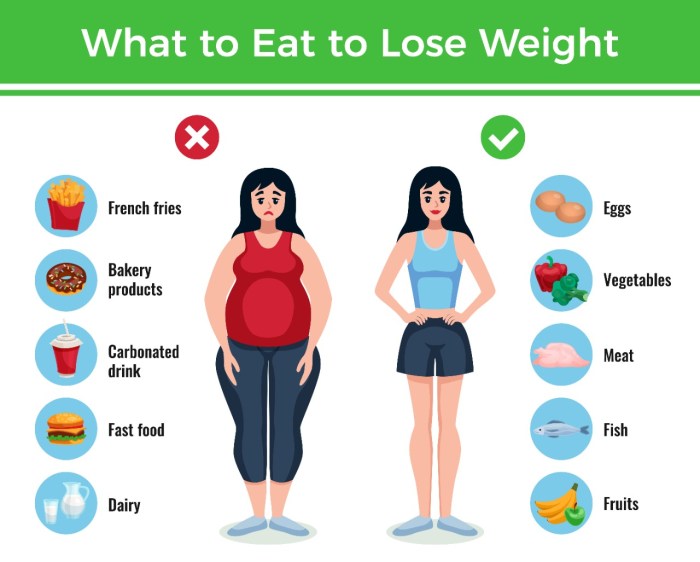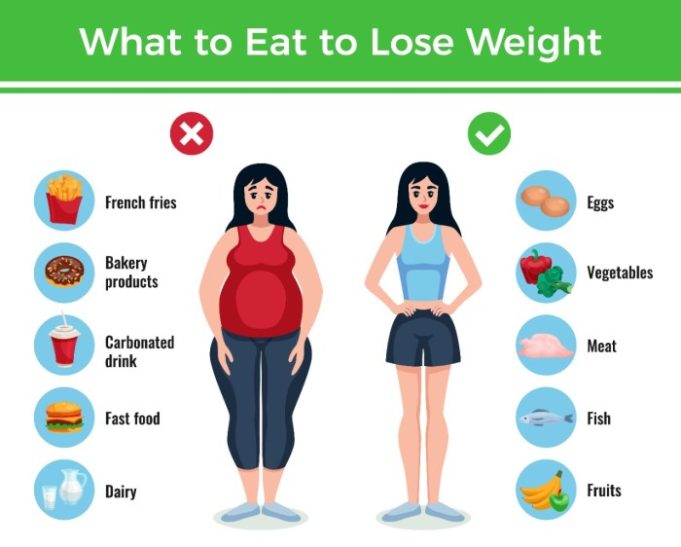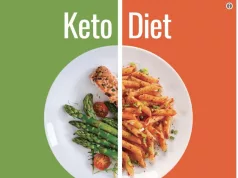How to lose weight for beginners can seem overwhelming, but it doesn’t have to be. Losing weight is about making sustainable lifestyle changes that work for you. It’s about understanding your body, making healthy choices, and staying motivated.
This guide will equip you with the knowledge and tools to embark on your weight loss journey with confidence.
The first step is to understand the basics of weight loss. This involves understanding the relationship between calories consumed and calories burned. You’ll learn about different weight loss methods, such as calorie restriction, exercise, and how to set realistic goals.
The key is to find a method that suits your lifestyle and preferences.
Understanding Weight Loss Basics
Weight loss is about creating a calorie deficit, which means burning more calories than you consume. It’s a simple concept, but it can be challenging to put into practice. This section will explain the fundamental principles of weight loss and provide an overview of different methods.
Calorie Deficit
A calorie deficit is the foundation of weight loss. To lose weight, you need to burn more calories than you consume. This can be achieved through a combination of diet and exercise.
The basic formula for weight loss is: Calories burned
Calories consumed = Calorie deficit.
For example, if you consume 2,000 calories per day and burn 2,500 calories, you’ll have a 500-calorie deficit. This deficit can lead to weight loss over time.
Weight Loss Methods
There are several methods for achieving weight loss, and the most effective approach often involves a combination of strategies. Here’s an overview:
Calorie Restriction
This involves reducing your daily calorie intake. It’s a common approach to weight loss, and it can be achieved by making changes to your diet, such as choosing lower-calorie foods, reducing portion sizes, and avoiding sugary drinks.
Losing weight for beginners can feel overwhelming, but it’s all about making small, sustainable changes. A balanced diet is key, and you might want to check out The best diet for weight loss and muscle gain for some helpful tips.
Remember, consistency is crucial, and focusing on whole foods and portion control will set you up for success.
Exercise
Physical activity helps burn calories and increase your metabolism. Regular exercise is crucial for weight loss and overall health. There are many types of exercise, including cardio, strength training, and flexibility exercises.
Lifestyle Changes
Making sustainable lifestyle changes can support your weight loss journey. These changes can include getting enough sleep, managing stress, and staying hydrated.
Setting Realistic Goals
Setting realistic goals is crucial for beginners. Start with small, achievable goals that you can maintain over time. Avoid setting unrealistic targets that can lead to disappointment and frustration.
Setting Up a Healthy Lifestyle
Making sustainable changes to your diet and exercise routine is crucial for successful weight loss. It’s not about quick fixes, but rather about building healthy habits that you can maintain over time.
Sample Daily Meal Plan
A balanced diet plays a vital role in weight management. Here’s a sample meal plan for a beginner that emphasizes portion control and nutrient-rich foods:
- Breakfast (300-400 calories):Oatmeal with berries and nuts, a whole-wheat English muffin with egg whites and avocado, or a smoothie with Greek yogurt, fruit, and protein powder.
- Lunch (400-500 calories):Salad with grilled chicken or fish, a whole-wheat wrap with hummus and vegetables, or lentil soup with a side of whole-grain bread.
- Dinner (500-600 calories):Baked salmon with roasted vegetables, chicken stir-fry with brown rice, or vegetarian chili with a whole-grain cornbread.
- Snacks (100-200 calories):Fruits, vegetables, yogurt, nuts, or a small handful of trail mix.
Weekly Workout Schedule, How to lose weight for beginners
Regular physical activity is essential for weight loss and overall health. This sample workout schedule incorporates both cardio and strength training:
- Monday:30 minutes of moderate-intensity cardio (brisk walking, jogging, cycling).
- Tuesday:Strength training (focus on major muscle groups – legs, chest, back, shoulders, arms).
- Wednesday:Rest or light activity (yoga, stretching, walking).
- Thursday:30 minutes of high-intensity interval training (HIIT) or a group fitness class.
- Friday:Strength training (focus on different muscle groups than Tuesday).
- Saturday:Active rest (hiking, swimming, playing sports).
- Sunday:Rest or light activity.
Staying Hydrated
Water is essential for numerous bodily functions, including weight management. Here are some tips for increasing your water intake:
- Carry a reusable water bottle with you:This will make it easier to stay hydrated throughout the day.
- Drink water before, during, and after exercise:This helps to replenish fluids lost through sweat.
- Set reminders:Use your phone or a timer to remind yourself to drink water regularly.
- Choose water over sugary drinks:Sodas, juices, and sports drinks are high in calories and can contribute to weight gain.
Making Sustainable Changes

Losing weight isn’t just about reaching a number on the scale; it’s about adopting healthy habits that you can maintain for the long term. Sustainable weight loss involves making gradual changes to your lifestyle, focusing on creating a balanced approach that works for you.
Managing Cravings and Avoiding Unhealthy Food Choices
It’s normal to crave unhealthy foods, especially when you’re starting a new diet. However, there are strategies you can use to manage these cravings and make healthier choices:
- Identify your triggers:Pay attention to when and why you crave unhealthy foods. Are you stressed, bored, or tired? Knowing your triggers can help you find healthier ways to cope with these feelings.
- Plan ahead:Prepare healthy snacks and meals to avoid impulse choices when you’re hungry. Having nutritious options readily available can make it easier to resist temptation.
- Don’t completely restrict yourself:Allowing yourself occasional treats can help prevent feelings of deprivation, which can lead to overeating. Choose small portions of your favorite treats and enjoy them mindfully.
- Focus on whole foods:Whole, unprocessed foods are naturally more satisfying and can help you feel full for longer. Fill your plate with fruits, vegetables, lean protein, and whole grains.
- Stay hydrated:Sometimes, thirst can be mistaken for hunger. Drinking plenty of water throughout the day can help curb cravings and keep you feeling full.
Incorporating Regular Physical Activity
Regular exercise is essential for weight loss and overall health. It burns calories, builds muscle, and improves your mood. Aim for at least 150 minutes of moderate-intensity aerobic activity or 75 minutes of vigorous-intensity aerobic activity per week.
- Find activities you enjoy:Exercise should be something you look forward to, not a chore. Try different activities until you find ones that you find enjoyable and motivating.
- Start small and gradually increase intensity:If you’re new to exercise, start with short, low-intensity workouts and gradually increase the duration and intensity as you get fitter.
- Make it a habit:Schedule exercise into your daily routine, just like any other important appointment.
- Incorporate movement into your daily life:Take the stairs instead of the elevator, walk or bike to work or errands, and stand up and move around every hour.
Staying Motivated and Consistent
Staying motivated and consistent with your weight loss goals can be challenging. Here are some tips to help you stay on track:
- Set realistic goals:Aim to lose 1-2 pounds per week. This is a healthy and sustainable rate of weight loss.
- Track your progress:Keeping a food diary and exercise log can help you stay accountable and see how far you’ve come.
- Celebrate your successes:Reward yourself for reaching milestones, but make sure your rewards are healthy and don’t sabotage your progress.
- Find a support system:Surround yourself with people who encourage and support your goals. Consider joining a weight loss group or working with a personal trainer or registered dietitian.
- Don’t give up:Setbacks are normal. If you slip up, don’t beat yourself up about it. Just get back on track as soon as possible.
Monitoring Progress and Seeking Support: How To Lose Weight For Beginners
Staying motivated and on track is crucial for successful weight loss. Monitoring your progress and seeking support can help you stay committed and achieve your goals.
Losing weight as a beginner can feel overwhelming, but it’s all about making small, sustainable changes. Focusing on a balanced diet and regular exercise is key. However, if you’re a woman over 40, you might need to consider additional factors like hormonal changes and slower metabolism.
Check out How to lose weight after 40 for women for more specific tips. Regardless of your age, remember that consistency is key for achieving your weight loss goals.
Tracking Food Intake and Exercise Progress
Tracking your food intake and exercise progress provides valuable insights into your eating habits and activity levels. This information can help you identify areas for improvement and make adjustments to your plan.
- Increased Awareness:Tracking your food intake helps you become more aware of your eating habits, portion sizes, and the types of foods you consume. This awareness can lead to healthier choices.
- Identify Patterns:By tracking your food intake, you can identify patterns in your eating habits, such as emotional eating or overeating at certain times of the day. This information can help you address these patterns and make positive changes.
- Monitor Calorie Intake:Tracking calories can help you stay within your daily calorie target, which is essential for weight loss. This allows you to make adjustments to your food choices and portion sizes to ensure you’re consuming the right amount of calories.
- Accountability:Tracking your progress helps you stay accountable for your actions and encourages you to stay on track. It provides a visual representation of your efforts and helps you stay motivated.
- Identify Exercise Trends:Tracking your exercise progress helps you see how often you’re working out, the types of exercises you’re doing, and the duration of your workouts. This information can help you identify areas where you can increase your activity level or make adjustments to your workout routine.
- Celebrate Achievements:Tracking your progress allows you to celebrate your achievements, no matter how small. Seeing your progress can boost your confidence and motivate you to continue your journey.
Using a Food Diary or Calorie Tracking App
Food diaries and calorie tracking apps are valuable tools for monitoring your food intake. They provide a structured way to record your meals, snacks, and drinks, allowing you to analyze your eating habits and make informed decisions.
- Choose a Method That Works for You:There are various food diaries and calorie tracking apps available, so choose one that suits your preferences and lifestyle. Some popular options include MyFitnessPal, Lose It!, and Weight Watchers.
- Be Consistent:The key to using a food diary or calorie tracking app effectively is consistency. Make it a habit to record your food intake daily, even if it’s just for a few minutes.
- Be Accurate:Accuracy is essential when using these tools. Be honest about the portions you eat and the ingredients in your meals. You can use a food scale to measure portions accurately.
- Track Exercise:Many food diaries and calorie tracking apps allow you to track your exercise, providing a comprehensive overview of your calorie intake and expenditure.
- Review Your Data:Regularly review your food diary or calorie tracking app data to identify patterns and areas for improvement. This data can help you make informed decisions about your diet and exercise.
Seeking Support from a Healthcare Professional or Registered Dietitian
While self-monitoring and tracking can be helpful, seeking support from a healthcare professional or registered dietitian can enhance your weight loss journey.
- Personalized Guidance:A healthcare professional or registered dietitian can provide personalized guidance based on your individual needs, medical history, and goals. They can create a safe and effective weight loss plan tailored to your specific situation.
- Address Underlying Conditions:If you have any underlying medical conditions, a healthcare professional can help you address these issues and ensure your weight loss plan is safe and appropriate.
- Nutritional Counseling:A registered dietitian can provide expert nutritional counseling, helping you understand the role of different nutrients in your diet and make informed food choices.
- Motivation and Accountability:Having a healthcare professional or registered dietitian as a support system can provide motivation and accountability, encouraging you to stay on track with your weight loss goals.
- Monitor Progress:They can monitor your progress and make adjustments to your plan as needed, ensuring you’re making safe and sustainable changes.
Addressing Common Challenges
It’s normal to encounter obstacles on your weight loss journey, especially as a beginner. These challenges can derail your progress and make you feel discouraged. Understanding common hurdles and developing strategies to overcome them is crucial for long-term success.
Losing weight for beginners can seem overwhelming, but it doesn’t have to be! You can start by making small changes to your lifestyle, like drinking more water and getting enough sleep. If you’re looking for ways to shed pounds without hitting the gym or drastically changing your diet, you might be interested in exploring alternative methods like How to lose weight without exercise and diet.
Remember, sustainable weight loss is about finding what works best for you, so don’t be afraid to experiment and find what feels right!
Overcoming Plateaus
Weight loss plateaus are common. Your body adapts to your new routine, and you might see a slowdown in weight loss. Here’s how to break through:
- Increase Activity:Adding more physical activity, like taking longer walks or trying a new exercise class, can help boost your metabolism and burn more calories.
- Reassess Your Calories:Track your calorie intake carefully and make sure you’re still within your target range. You might need to adjust your calorie intake slightly to break through the plateau.
- Change Up Your Exercise Routine:Your body gets used to the same workouts. Try different exercises, such as interval training or resistance training, to challenge your muscles and increase calorie burn.
- Be Patient:Plateaus are a natural part of the process. Don’t get discouraged. Keep at it, and your body will eventually adjust and start losing weight again.
Dealing with Setbacks
Setbacks happen. Don’t let a slip-up derail your entire journey.
- Don’t Give Up:A single setback doesn’t mean you’ve failed. It’s an opportunity to learn and adjust your approach.
- Identify the Cause:What led to the setback? Was it a stressful event, a lack of planning, or a lack of support? Once you know the cause, you can address it.
- Get Back on Track:Don’t dwell on the setback. Focus on getting back to your healthy habits as soon as possible.
Managing Emotional Eating and Stress-Induced Weight Gain
Emotional eating and stress can significantly impact your weight loss journey.
- Identify Triggers:Pay attention to your emotions and identify what triggers you to eat when you’re not hungry. Is it stress, boredom, or sadness?
- Develop Healthy Coping Mechanisms:Find alternative ways to deal with stress and negative emotions, such as exercise, meditation, spending time in nature, or talking to a friend.
- Seek Support:Talk to a therapist or counselor if you’re struggling to manage emotional eating or stress. They can provide guidance and support.
Concluding Remarks

Losing weight is a journey, not a sprint. Remember to be patient with yourself and celebrate your progress along the way. It’s essential to be kind to your body and focus on building healthy habits that you can maintain long-term.
By incorporating the information and strategies Artikeld in this guide, you can set yourself up for success and achieve your weight loss goals.
Questions Often Asked
How much weight should I aim to lose per week?
A healthy and sustainable weight loss rate is 1-2 pounds per week. Losing weight too quickly can be unhealthy and unsustainable.
What if I hit a plateau?
Plateaus are common in weight loss. They often occur when your body adjusts to your new calorie intake or exercise routine. Try adjusting your diet or exercise plan to break through the plateau.
What are some healthy snacks to eat?
Healthy snack options include fruits, vegetables, nuts, yogurt, and hard-boiled eggs. These snacks can help you stay full and prevent overeating.
























